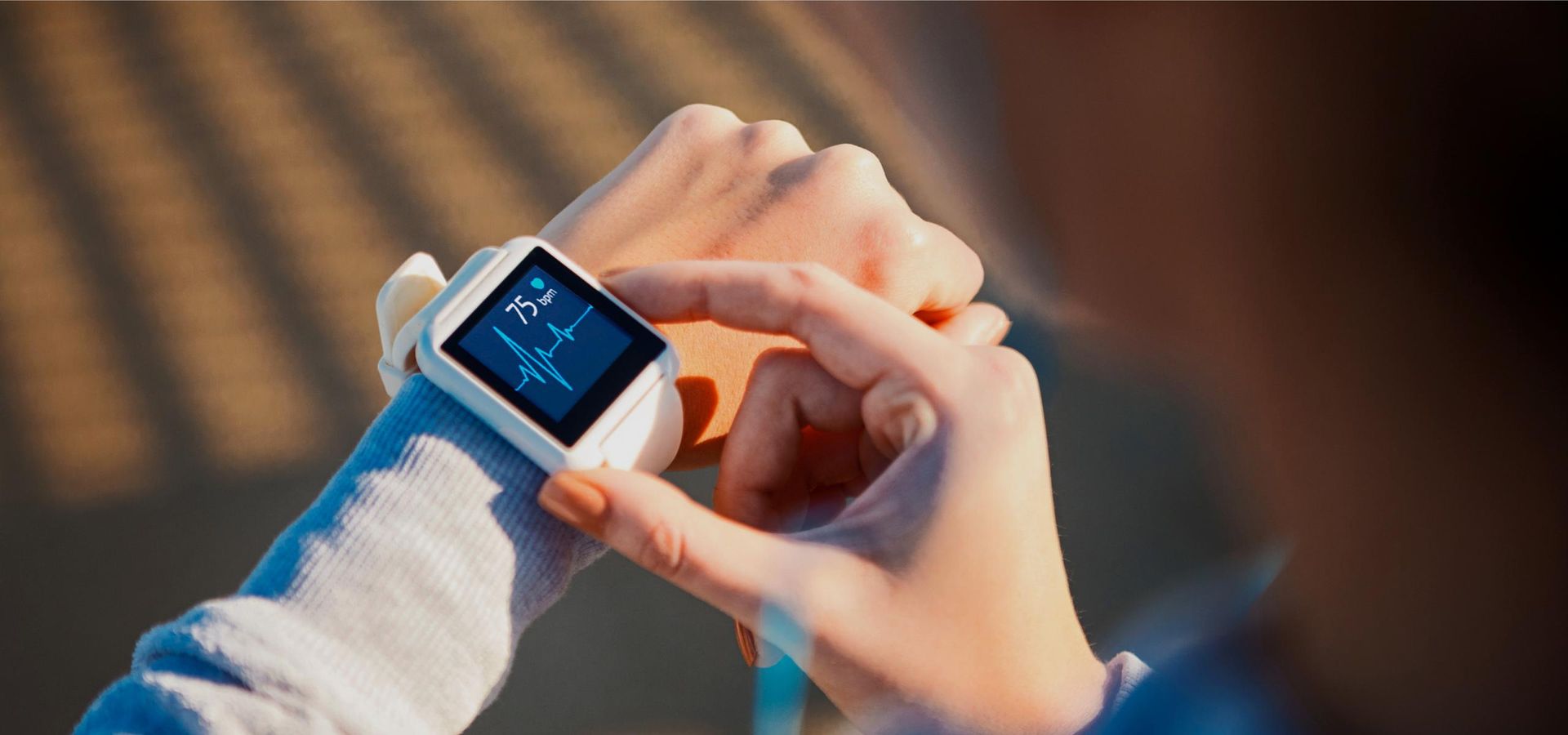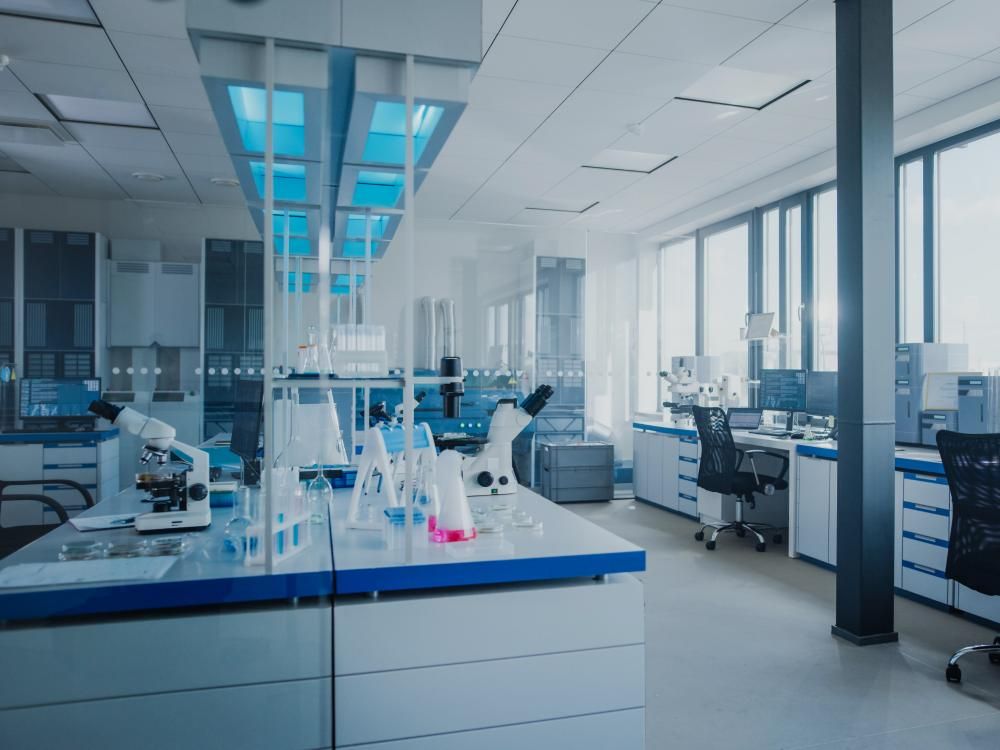Internet of Medical Things (IoMT) is a subset of Internet of Things (IoT). IoMT enables connecting medical devices and innovative sensors to the internet, which facilitates the collection of huge amounts of critical data. This data can be then analyzed and used to understand patient conditions, to diagnose faster and more accurately, and to understand resource utilization patterns at a healthcare facility. Deloitte reports that the IoMT market is estimated to reach $158.1 billion in 2022.
IoMT is gaining popularity in healthcare software development due to the dropping prices of sensor technology, availability of high-speed internet, and the increase in chronic disease rates, which leads to an overwhelming amount of checkup visits. A growing number of elderly people also plays an important role. According to Forbes, by 2025 the world’s population is estimated to be 8 billion, with approximately 1.2 billion elderly people. Those people experience more health issues, which increases associated healthcare costs for both patients and medical facilities, forcing them to search for an alternative to traditional approaches.
Remote real-time patient monitoring
Connected medical things can tremendously simplify the life of people with disabilities and chronic conditions. This also helps healthcare institutions, as patients can be monitored and treated remotely, freeing hospital beds for emergency patient care. Additionally, gathering data from medical devices allows projecting a holistic picture of a patient, and performing constant monitoring that cannot be achieved through doctor visits, even if those visits are frequent.
Chronic disease monitoring
There are medical devices that patients can use at home to track blood pressure, sweat, and glucose level. According to the Center for Disease Control and Prevention, 6 in 10 Americans have a chronic disease, with 4 out of 10 having two diseases or more.
Diabetes is a common chronic disease. One example of controlling diabetes without constant doctor visits is using an automated insulin delivery system. This system monitors glucose levels in patients’ blood and adjusts insulin delivery accordingly. With this automated adjustment, the patient can sleep through the night safely without fearing their blood sugar level might drop drastically.
Another common chronic disease is asthma that forces affected people to use inhalers. Propeller Health has developed a sensor to be incorporated into an inhaler. This sensor connects to an app and gathers data on inhaler usage, helping patients to understand the causes of their symptoms, track their inhaler use frequency, and forecast attacks based on this data. The findings can be shared with the healthcare provider who can verify whether the patient is using the inhaler as prescribed.
Verifying treatment plan adherence
One example of monitoring adherence is an IoMT pill. After being swallowed, this pill produces a signal captured by a wearable sensor. This data is transmitted from the sensor to an app and is shared with the doctor. If such a system seems invasive, one should know that it works on an opt-in basis, and the patient can opt-out and stop sharing information at any moment.
Data about patients’ activities gathered from connected medical devices provides an objective view. This is an alternative to relying on patients’ subjective reports on how they feel and what prescriptions they followed.
Timely and accurate diagnosis
Connected medical devices allow capturing diverse types of diagnostically relevant data that can be used by clinical decision support systems. This includes psychological, genetical, and behavioral data. This diverse data projects a more realistic and complete picture of a patient’s condition and allows uncovering health patterns that would not be visible to a doctor performing a one-time diagnostic test.
Diagnosing rare leukemia case in only 10 minutes
A patient admitted to a hospital in Japan was diagnosed with acute myeloid leukemia (blood cancer). The patient was subjected to chemotherapy to treat her disease, and the therapy was deemed successful. However, the doctors noticed her recovery was unusually slow, which led them to realize it was a different type of leukemia.
The next step was to delegate the diagnosis to IBM Watson. The system analyzed relevant data from millions of oncology research papers, in addition to the patient’s genetic data. The supercomputer detected over a thousand genetic mutations in the patient’s DNA and was able to identify the relevant ones while ignoring those irrelevant to the disease in question. Remarkably, Watson was able to access and analyze this enormous amount of data in only 10 minutes, compared to 2 weeks needed to perform the task by doctors.
Computer vision in diagnosis
Thanks to advances in software development and data processing, medical computer vision systems can read images and videos, extract information, and perform analyses. Healthcare startups cooperate with computer vision companies to develop a pattern recognition system, which will help doctors recognize changes such as hardening of arteries and appearance of tumors, and diagnose illnesses such as cancer. Using computer vision is a faster and cheaper method compared to traditional biopsy.
Such computer vision programs learn from thousands or even millions of images to memorize how anomalies look like, to be able to identify them later on. This might seem similar to the way humans come up with diagnoses. However, this information is coded in zeros and ones, so this is not something a human eye can see in an image.
Computer vision for skin cancer
Computer vision made a breakthrough in dermatology as it can analyze a scan of a person’s skin faster than dermatologists during an in-person test.
Stanford University researchers have developed a learning system which is expected to identify potential skin cancer from scans. This system was tested against 21 certified dermatologists in reviewing 370 skin scans. The system showed excellent performance and recommended the same course of action as the dermatologists did, thereby displaying a great potential for such systems in dermatological practices.
Diagnosing rare diseases from facial pictures
Face2Gene designed an app that helps doctors identify rare syndromes from a photo of a patient’s face. A doctor uploads a patient’s picture, and the system starts looking for a matching syndrome based on the facial features. It displays all the matching syndromes together with corresponding facial images ranked by relevancy. The doctor can put the face of their patient directly against the face embodying the syndrome for a better comparison. This app also gives a detailed explanation for every syndrome saving the doctor’s time.
Advanced analytics of connected medical device data
In the hospital setting, different medical devices constantly generate large amounts of data. Data comes from heart monitors, respirators, blood pumps, and other devices. Recording and analyzing this data manually is a tedious task prone to human error. IoMT offers the environment to automatically record and analyze this data in real time, which gives useful insights and frees medical staff to work on actually providing care. Experts also recommend providers to perform EHR migration prior to applying advanced analytics to connected device data. This way providers get the opportunity to monitor their patients’ health over time without exhausting internal systems with heavy data load.
Medical device data provides rich insights into patients’ health conditions and the impact of treatment received, analyzes the impact of medication on different people, and shows population health trends. Additionally, it is possible to use this data to analyze operational workflows within hospitals, improve them to achieve cost reduction, and identify best practices.
Due to the benefits of IoMT data analysis, healthcare institutions are attempting to develop advanced analytical capabilities. It is also common for healthcare facilities to cooperate with tech companies to get deeper insights from their data.
Data analytics in glucose monitoring systems
Dexcom, a developer of continuous glucose monitoring systems, has cooperated with Verily Life Sciences to produce a glucose monitoring system that uses analytics to help people with diabetes control their condition. The cooperation resulted in the development of a wearable device with a sensor sitting under the skin and monitoring interstitial fluid. This sensor has wireless connectivity to enable sharing and storing data about the patient’s glucose level, which is then analyzed, with the results used to offer personalized treatment.
Cooperation among MedTech companies
Another popular trend is cooperation forged among healthcare institutions to join their datasets for even more comprehensive analysis. One example of such cooperation is the alliance of GE Healthcare and Roche Diagnostics. The two companies aim to create a dashboard that uses GE Healthcare’s imaging and monitoring data together with Roche’s tissue pathology and genomics data. These dashboards will assist in clinical decision-making regarding cancer and critical care patients through quick identification and even prediction of complications.
Managing hospital staff, equipment, and supplies
Some hospitals today are of the size of a small city. Locating staff members and equipment, especially during an emergency, can become a tedious and time-consuming process. Healthcare IoT comes to aid as it facilitates locating everything using tracking devices.
Management and scheduling
As published in the International Journal of Health Geographics, hospitals tend to buy around 10 to 20 percent more portable equipment than they need for operation. With the help of IoMT, it is possible to attach trackers to medical supplies and receive signals when supply is running low. Similarly, it is possible to track people and equipment. For example, when the emergency room needs a defibrillator, IoMT can tell where to find it. If there is a patient who only speaks German, using IoMT you can check if any German speaking staff is on duty today.
Another example is managing blood bank data within one healthcare facility with software that connects and integrates data streams from multiple transfusion devices in real time.
Analyzing data supplied by connected medical devices will help managers make better staffing and scheduling decisions. They will understand staff mobility and equipment utilization patterns. This information will enable them to predict where staff and equipment will be needed the next day (or in a longer term). With this strategy, managers can build staff scheduling and resource allocation schemes, ensuring that the right resource is provisioned at the right time and place, thereby reducing resource conflicts.
Equipment malfunctioning notifications
IoMT makes it possible to monitor a network of connected medical devices and signal when a device is not working properly. Receiving this information on time allows medical staff to take precautions and fix the equipment quickly, minimizing or even avoiding its downtime. Additionally, this timely notification allows to fix the equipment at an early stage before it is damaged beyond repair.
For example, the e-Alert system by Philips monitors magnetic resonance imaging (MRI) systems to identify any potential malfunctioning before its occurrence so that the hospital can respond proactively and minimize the device downtime. e-Alert monitors parameters such as helium level and cooled water supply, as well as any other parameters required for optimal functioning of MRI.
Facilitating arrangements
Another important use case of connected medical devices is connection to ambulance vehicles to understand patients’ needs and prepare the emergency room before their arrival to save time. This becomes even more valuable in life-threatening situations when every second counts.
One particular way of doing this is installing 3G video equipment in ambulances. Through this video system, the hospital’s personnel can learn about the patient’s condition while he or she is on the way. If the ambulance is very far from the hospital, the remote medical imaging system can be used as a part of preliminary treatment.
Taking a shot at IoMT
Healthcare providers are increasingly recognizing the merits of IoMT for their facility management. However, there are several considerations to be aware of while incorporating IoMT in your practices. One of them relates to the infrastructure costs necessary to establish the needed platform for connected medical devices. Another consideration is cybersecurity threats and data theft risks. There is also a regulatory burden of different governmental policies regarding data exchange and privacy.
Looking at the benefits, IoMT brings relief to patients with chronic disorders, as their condition can be monitored from the comfort of their home without the need to constantly visit healthcare facilities, while the hospital capacity can be allocated to patients with emergencies. Data collected from connected medical devices helps understand which resources are over- or underutilized and allows for more efficient scheduling and allocation of medical staff and equipment.
Even though it requires a substantial initial investment of money and energy, IoMT will pay back with better health outcomes and more efficient use of your resources.





